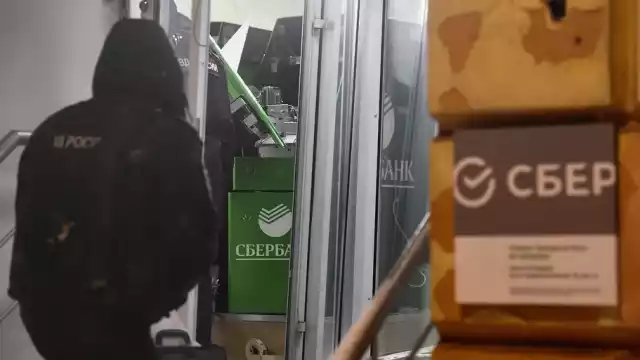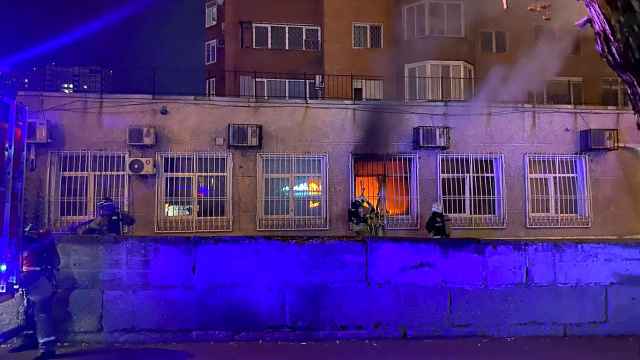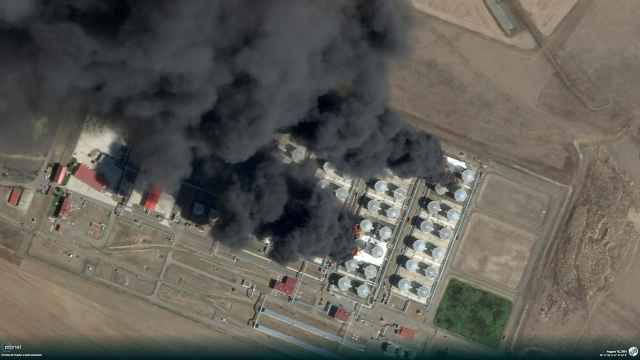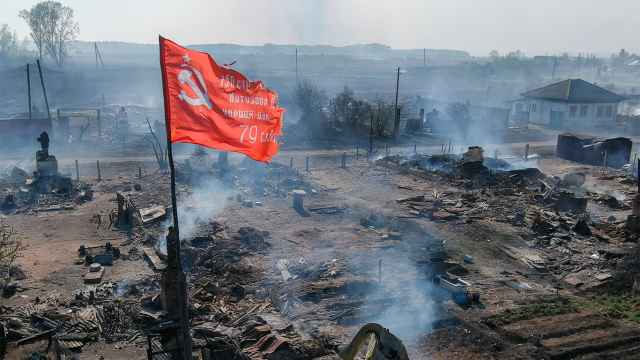Summer wildfires devouring Siberian forests are hardly unusual, but this year’s are a bigger worry than normal because clouds of smoke have reached big cities in the Asian part of Russia and because the authorities have reacted clumsily. The extra attention from the Russian and global media is welcome, even if it's tinged with unnecessary alarmism: Russia needs to start planning for the climate change that’s beginning to transform its enormous forests. More fires aren't the only change.
So far this year, a total of 8.3 million hectares (20.5 million acres) of forest has burned out in Russia. That roughly equals the area of Austria; it’s undoubtedly a bad year. At the peak of the wildfires on July 23, the number of fires in the Russian woods was about three times the 17-year average for that day.
Russia’s forests occupy an area larger than Australia, and an overwhelming majority of the fires occur far from any human habitation, which often makes it uneconomical to try to put them out. This has prompted Moscow to hand the responsibility for the fire safety of remote forested areas to provincial authorities, which lack the resources to do much other than watch the trees burn and hope it rains. But that’s not something officials should ever say publicly, as Alexander Uss, governor of Krasnoyarsk in eastern Siberia, did this year; President Vladimir Putin soon sent troops to fight the flames in Uss’s region, forcing the governor abruptly to change tack. Russians see the vast forests as a key part of national wealth, even though forestry only accounts for about 1% of the country’s economic output.
Although there have been a few years when fires destroyed more of the woods than so far in 2019, there are still good reasons to worry. Most of these years have occurred quite recently. The average burned-up area between Jan. 1 and Aug. 1 has increased by two-thirds in the last 10 years compared with the previous decade.
Some officials, including Prime Minister Dmitry Medvedev, have voiced suspicions that forests often are being burned intentionally to cover up illegal logging. But while there’s probably some of that, the trend toward bigger burned-out areas means there are more important forces at work: It’s unlikely that, given Russia's stagnant economy, the illegal timber industry is growing at such a fast pace. The increase in fires is almost certainly a consequence of climate change — and, when it comes to Russian forests, not the only consequence.
In a paper presented at an environmental science conference this year, a team from the St. Petersburg Forestry Research Institute calculated that, while the number of wildfires and the associated costs will keep increasing with further climate change, it’ll also make the vegetation period longer for many of Russia’s forested areas — on average for the entire country, by 25 days by the end of the century. This will lead to a gradual replacement of conifers, which today account for 70% of the total market value of Russia’s trees, with hardwood. By 2099, deciduous trees will be 60%. Western models predict a similar change in the makeup of the Russian woods.
Sure, in a warmer climate, more trees will burn. Longer vegetation periods will mean more trees will grow, too, replacing the burned-out pine and fir woods. These could be weaker trees with less dense, less valuable timber than today and with less ability to absorb carbon dioxide out of the air — a consequence of warmer temperatures that scientists have noticed in many parts of the world.
This has implications for forestry economics and for the ecosystems of vast, nearly unpopulated areas in Siberia. The area’s forests absorb up to 600 million tons of CO2 per year, or up to a quarter of global absorption. Their ability to keep doing that is in question as different climate-related trends clash.
The Russian government traditionally has treated the woods as something that has always been there and will never go away or change. The country’s unpopulated territory takes up a lot of space on the map, but officials aren’t too concerned about it.
If people start getting worried, as they suddenly are this year, the Kremlin signals that it cares, too, but not much gets done. Russia’s forestry strategy, adopted in September 2018, barely mentions climate change at all and doesn't discuss how it’s going to affect the composition of Russian woods. Perhaps the smoke over Siberian cities will draw more attention to what else is changing besides the average area destroyed by fires.
A Message from The Moscow Times:
Dear readers,
We are facing unprecedented challenges. Russia's Prosecutor General's Office has designated The Moscow Times as an "undesirable" organization, criminalizing our work and putting our staff at risk of prosecution. This follows our earlier unjust labeling as a "foreign agent."
These actions are direct attempts to silence independent journalism in Russia. The authorities claim our work "discredits the decisions of the Russian leadership." We see things differently: we strive to provide accurate, unbiased reporting on Russia.
We, the journalists of The Moscow Times, refuse to be silenced. But to continue our work, we need your help.
Your support, no matter how small, makes a world of difference. If you can, please support us monthly starting from just $2. It's quick to set up, and every contribution makes a significant impact.
By supporting The Moscow Times, you're defending open, independent journalism in the face of repression. Thank you for standing with us.
Remind me later.








